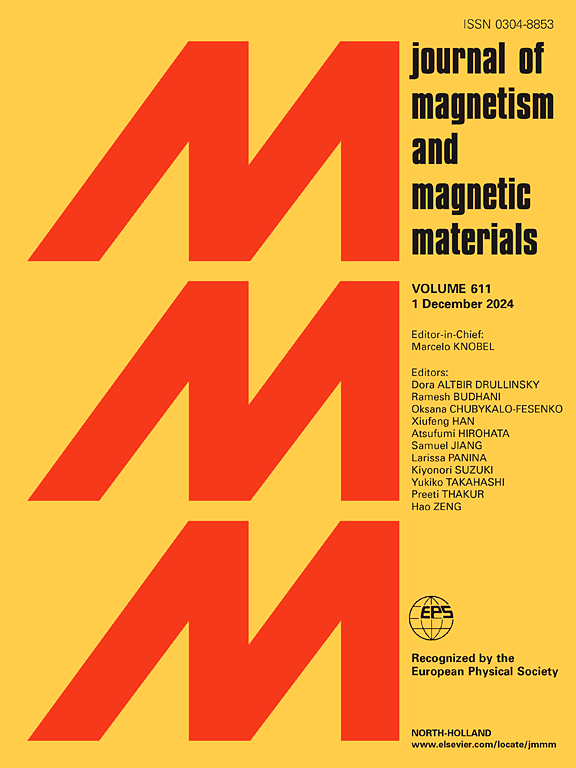A pre-magnetized carbon fiber reinforced magnetorheological elastomer
IF 2.5
3区 材料科学
Q3 MATERIALS SCIENCE, MULTIDISCIPLINARY
引用次数: 0
Abstract
Ordinary magnetorheological elastomer (MRE) mostly uses soft foundation materials as the matrix, and the prepared MRE has poor stiffness, which cannot meet the use of heavy-duty occasions such as hydraulic pipelines in large marines. To this end, fiber reinforced MRE was fabricated by adding carbon fiber (CF) precursor into silicone rubber matrix to improve the rigid bearing capacity. The effects of CF content, pre magnetization current and working magnetic field intensity on the energy storage and energy dissipation characteristics of MRE in thxxe frequency range of 0.1 Hz–100 Hz and the shear strain range of 0.01 %–10 % were analyzed. Experimental results indicated that with the increase of CF content, the bearing capacity of fiber reinforced MRE increases, but its energy consumption capacity decreases. The application of a solidification magnetic field can enhance its load-bearing capacity, but it will reduce its vibration reduction performance and limit its application in engineering. This discovery provides a certain theoretical basis for the application of MRE in the field of vibration reduction of marine hydraulic oil pipelines.
一种预磁化碳纤维增强磁流变弹性体
普通磁流变弹性体(MRE)多采用软基材料作为基体,制备的MRE刚度较差,不能满足大型舰艇液压管道等重载场合的使用。为此,在硅橡胶基体中加入碳纤维(CF)前驱体制备纤维增强MRE,以提高其刚性承载能力。分析了CF含量、预磁化电流和工作磁场强度对MRE在0.1 Hz ~ 100 Hz频率范围和0.01% ~ 10%剪切应变范围内储能和耗能特性的影响。实验结果表明,随着CF含量的增加,纤维增强MRE的承载能力增加,但其能耗能力下降。施加固化磁场可以增强其承载能力,但会降低其减振性能,限制其在工程上的应用。这一发现为MRE在船舶液压油管减振领域的应用提供了一定的理论依据。
本文章由计算机程序翻译,如有差异,请以英文原文为准。
求助全文
约1分钟内获得全文
求助全文
来源期刊

Journal of Magnetism and Magnetic Materials
物理-材料科学:综合
CiteScore
5.30
自引率
11.10%
发文量
1149
审稿时长
59 days
期刊介绍:
The Journal of Magnetism and Magnetic Materials provides an important forum for the disclosure and discussion of original contributions covering the whole spectrum of topics, from basic magnetism to the technology and applications of magnetic materials. The journal encourages greater interaction between the basic and applied sub-disciplines of magnetism with comprehensive review articles, in addition to full-length contributions. In addition, other categories of contributions are welcome, including Critical Focused issues, Current Perspectives and Outreach to the General Public.
Main Categories:
Full-length articles:
Technically original research documents that report results of value to the communities that comprise the journal audience. The link between chemical, structural and microstructural properties on the one hand and magnetic properties on the other hand are encouraged.
In addition to general topics covering all areas of magnetism and magnetic materials, the full-length articles also include three sub-sections, focusing on Nanomagnetism, Spintronics and Applications.
The sub-section on Nanomagnetism contains articles on magnetic nanoparticles, nanowires, thin films, 2D materials and other nanoscale magnetic materials and their applications.
The sub-section on Spintronics contains articles on magnetoresistance, magnetoimpedance, magneto-optical phenomena, Micro-Electro-Mechanical Systems (MEMS), and other topics related to spin current control and magneto-transport phenomena. The sub-section on Applications display papers that focus on applications of magnetic materials. The applications need to show a connection to magnetism.
Review articles:
Review articles organize, clarify, and summarize existing major works in the areas covered by the Journal and provide comprehensive citations to the full spectrum of relevant literature.
 求助内容:
求助内容: 应助结果提醒方式:
应助结果提醒方式:


